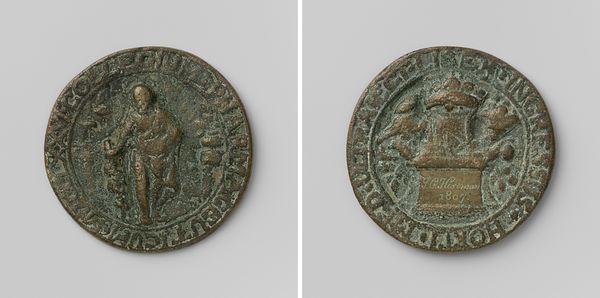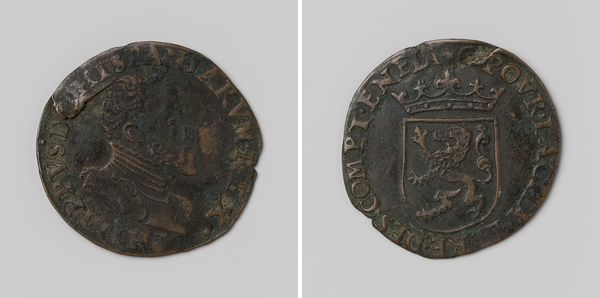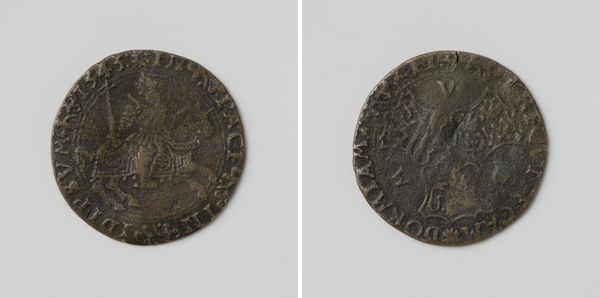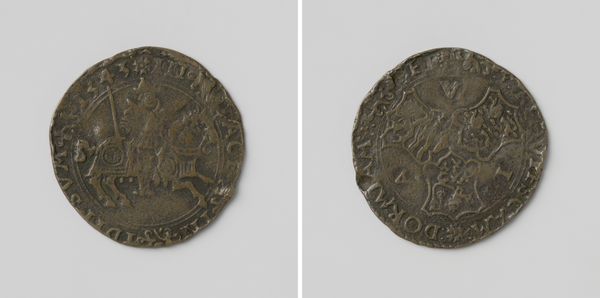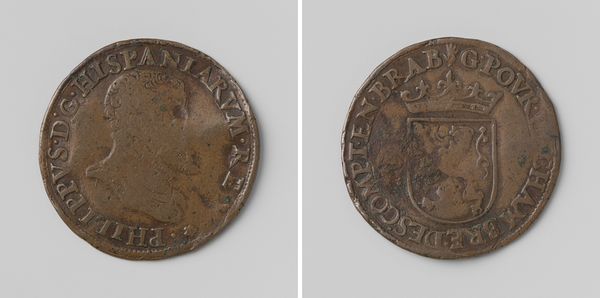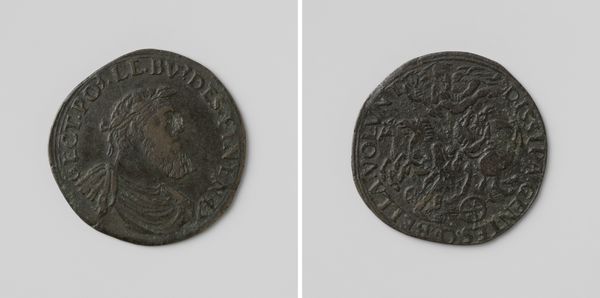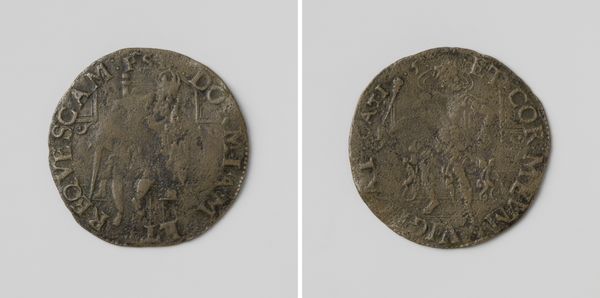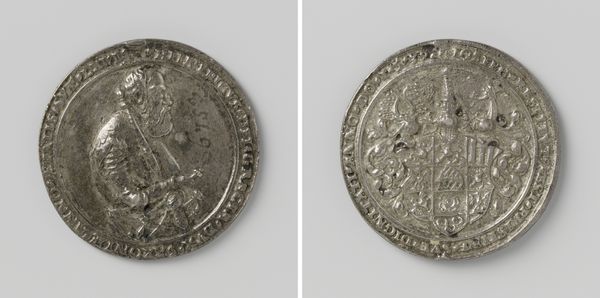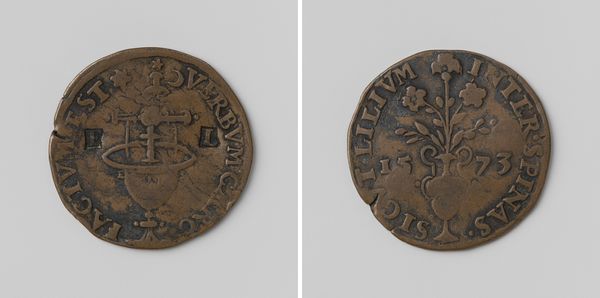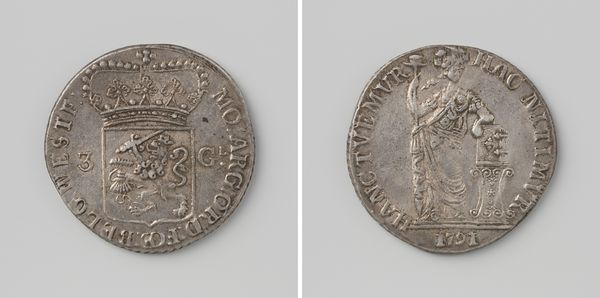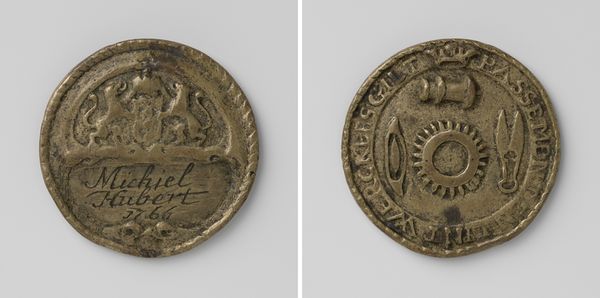
metal, relief, sculpture
portrait
medieval
metal
stone
sculpture
relief
11_renaissance
sculpture
Dimensions: diameter 2.8 cm, weight 4.38 gr
Copyright: Rijks Museum: Open Domain
Editor: This intriguing object, "Karel V, Duits keizer, rekenpenning van de stad Brussel" dates back to 1556. Crafted in metal, this relief sculpture has a worn, almost weathered look. I'm curious to hear your thoughts. How would you approach understanding this work? Curator: We have to consider the material conditions of its creation. This isn't simply about aesthetics; it's about the labor and the social context embedded within the metal itself. Think about where the metal came from, who mined it, who designed the die, who struck the coin. This wasn't just a portrait; it was a tool of propaganda and commerce. Editor: So, you're saying the very act of creating and using this coin speaks volumes about power and economy? Curator: Precisely. Consider the details - the effigy of Charles V. Royalty used objects like this to communicate their authority to the masses, yes. But it also had very practical implications about trade, taxation, and the circulation of wealth. The slight damage even offers a glimpse into the everyday lives, how these items of prestige wore out. It forces us to examine the relationship between production, consumption, and the dissemination of power through a tangible object. Who do you think handled this object daily? Editor: Likely merchants, traders... officials perhaps? I never considered it as a form of early communication, or that it had this social footprint. Curator: It’s about breaking down the idea of 'high' art versus functional objects. This penning exists at the intersection of both. Its value resides in the way the material reflects broader social relations. Editor: This certainly reshapes how I view historical artifacts! Looking beyond the mere image to consider the whole story of its production and usage is crucial. Curator: Absolutely. Hopefully, it will change how you look at objects in general and ask further-reaching questions.
Comments
No comments
Be the first to comment and join the conversation on the ultimate creative platform.
